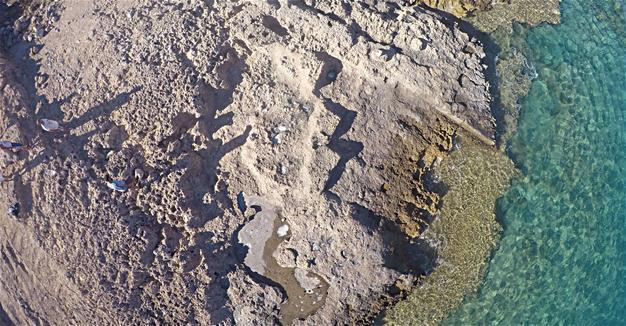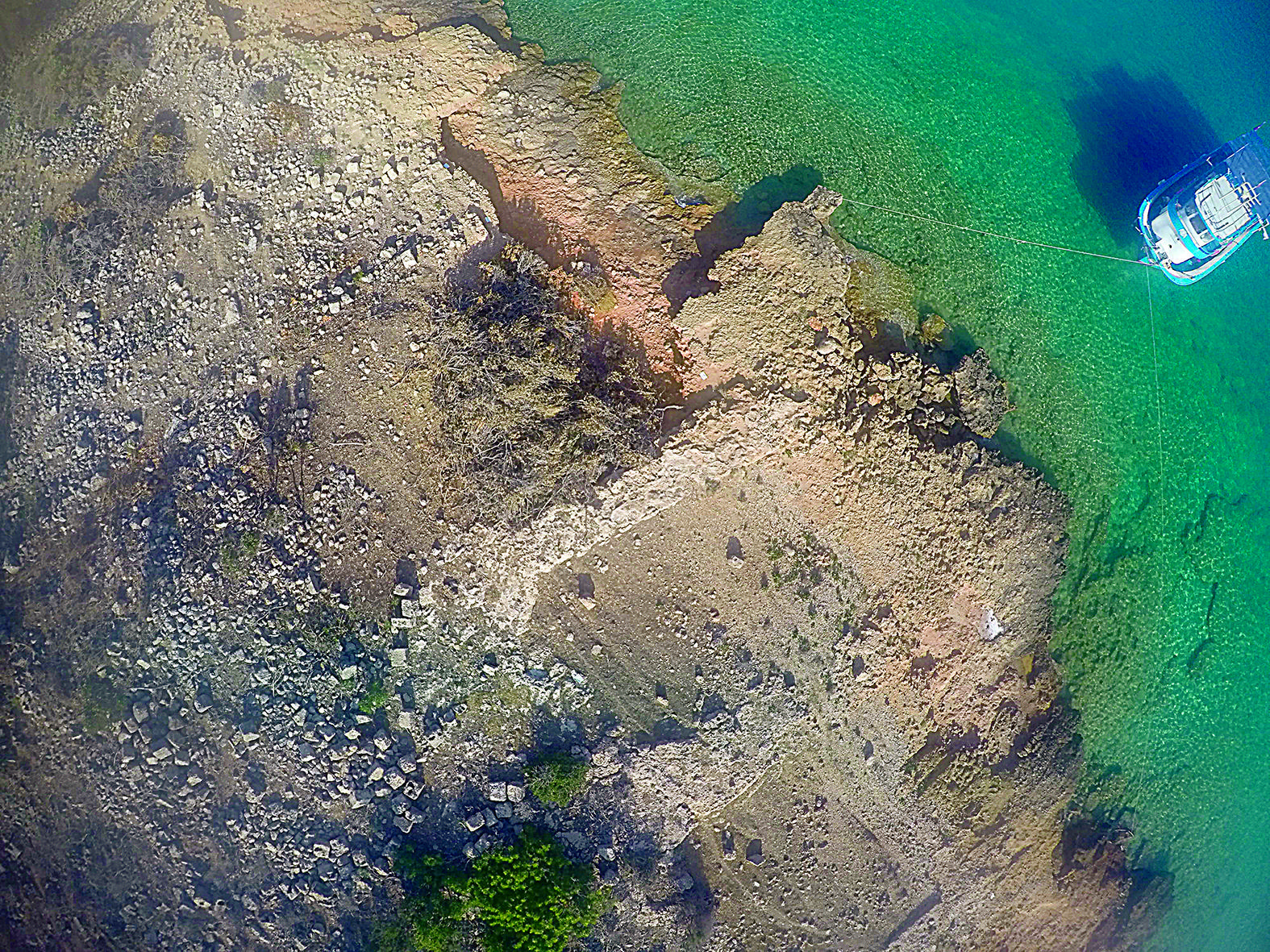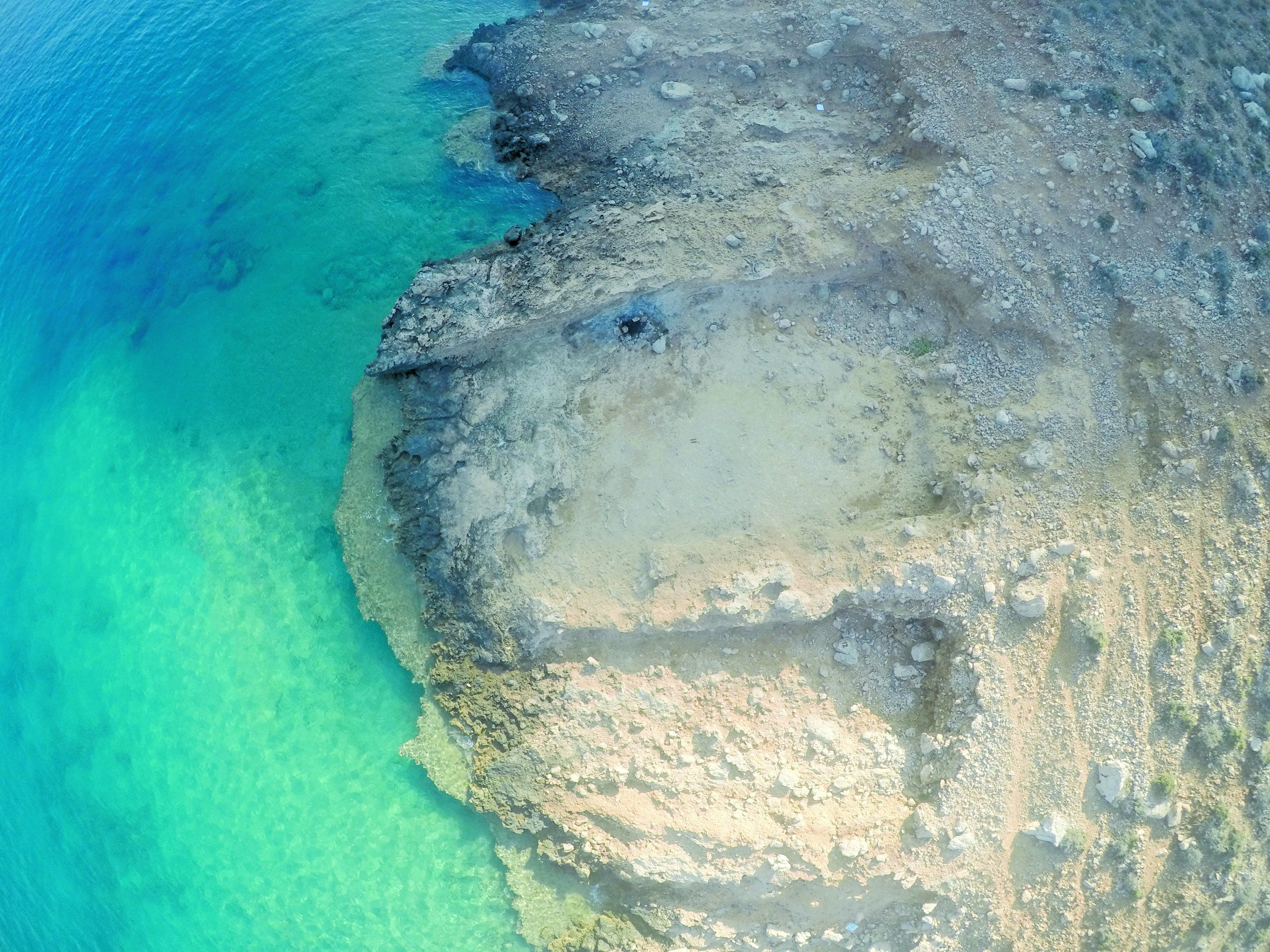Huge ancient shipyard unearthed on Turkey’s Dana Island
ANTALYA – DHA
 A huge shipyard, believed to be the oldest in the world, has been discovered on Dana Island in the southern province of Mersin’s Silifke district.
A huge shipyard, believed to be the oldest in the world, has been discovered on Dana Island in the southern province of Mersin’s Silifke district. Academics believe that the huge shipyard, which includes nearly 270 slipways, could shed light on the 400-year “Dark Ages” of the Mediterranean over 1,000 years B.C.
“This is the one and only in the world. The biggest shipyard that has been proven archaeologically in the world,” said Hakan Öniz, the head of Selçuk University’s Underwater Archaeology Department.
Öniz said they had started underwater works on the coasts of Mersin in 2015 in an attempt to discover archaeological artifacts and prohibited areas for diving on the coasts of Mersin, particularly in Silifke.
He also added that they had determined the existence of archaeological wreckages in the region. “But the most exciting for us was an iron spur that we found at a depth of 35 meters and that was used as the weapon of warships in ancient ages. Such an iron spur has been found for the first time in the world,” Öniz said.
The team has carried out works from west to east on the Selçuk 1 Scientific Research Ship and is continuing to work around the Dana Island, located two kilometers off the coast.

“We were surprised when we found dozens of slipways in the northern part of the island in 2015,” Öniz said, adding that they were still working to determine the exact period these structures date back to.
“During works in 2016, we also unearthed a huge shipyard where 274 ships could be built at the same time. It is the only such shipyard in the world. We are continuing work to try to date it. Most probably it is the oldest shipyard in the world. We estimate that it was used around 1,200 B.C. in the Late Bronze Age,” he said.
Island of the Denyen
Stating that the Dana Island most probably was known as the island of the Denyen, named the “Sea People” in the 12th century, Öniz said the Denyens were first mentioned by the Hittite King Telipinu around 1,500 B.C. “The Adania region, which King Telipinu mentioned, is the region of Adana and Mersin today,” he added.
“The reason why this era is called the ‘Dark Age’ is that we have limited archaeological information about a period of around 300-400 years. Most probably a big drought, earthquakes or epidemic disease occurred in the 13th century B.C. We can deduce this from the fact that Egyptian Pharaoh Ramses II had to send ships full of grain from the Alexandria region, which is usually productive and suitable for agriculture. Ancient sources suggest there was a famine around this era,” Öniz said.

“Probably the Denyens, together with other groups suffering from the famine, attacked Egypt in order to get grain. Ramses III said the Egyptians defeated the Denyens and he sent the captured Denyens and others to remote regions as soldiers. He pursued the other Denyens to their island in the north and destroyed them there,” he added.
“But this story is not limited to the Deneyns and the Hittites. We know of the existence of the late Hittite kingdoms in the Cilicia region in the Iron Age. We know that they resisted against the New Babylon Kingdom that wanted their iron and grain. The name of the island became Pitusu in the Iron Age. The King of Babylon Neriglissar described Pitusu as a ‘mountain in the middle of the sea.’ He said he attacked it and 6,000 soldiers on this small island resisted against him. The existence of those 6,000 people reveals that the island continued serving as a shipyard in the Iron Age too,” Öniz said.
“History effectively stopped on the island around 800 years ago. And the modern law of the Turkish Republic does not give permission for any work or restructuring on the island. It is now completely a part of the world heritage,” he added.
















